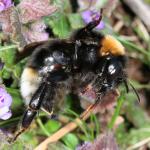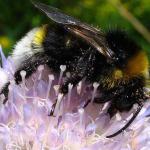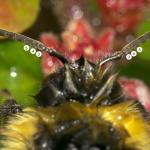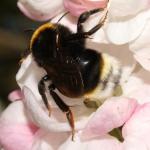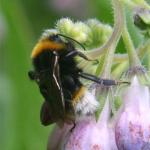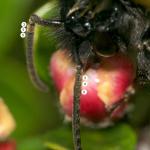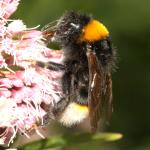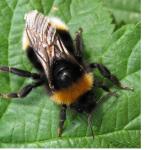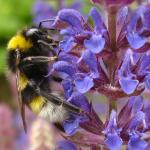One of the socially parasitic bumblebees formerly placed in the genus Psithyrus, which is now regarded as a sub-genus of Bombus. It is known to parasitise the nests of Bombus terrestris. The general distribution is more southerly than that of its look-alike, Bombus bohemicus, which matches the situation in the known hosts of these two species (B. lucorum is the host of B. bohemicus). This may be a species which is showing signs of distribution change due to climatic change. In view of the northward extension of distribution of several bumblebee species it will be interesting to see whether B. vestalis has also extended its range northwards. Both males and females can be suspected by the narrow yellow patches at the base of the white tail. These patches are generally more intense and extensive than in B. bohemicus, however, microscopic examination will be required to reliably separate the two species.
Widely distributed in England, Wales and south-east Scotland. Now distinctly uncommon on the Isles of Scilly (Beavis 2000). Overseas, the species occurs in much of Europe, although it is scarce in Scandinavia, occuring in the extreme south only. In Asia, it is found from the Caucasus to northern Iran.
It is found in a wide variety of habitats, as is its host.
Females leave hibernation during April or May. New males and females are produced in July and August.
After emerging from hibernation during April the mated female seeks out a small B. terrestris nest with a few workers. The female sneaks into the nest and hides while it acquires the nest scent. It may dominate, or kill, the host queen and takes over the egg laying for the colony. These eggs produce only new B. vestalis females and males, which take no part in the running of the colony, all work being done by the host workers.
A wide range of plants from different families.
None specifically recorded in Britain.


